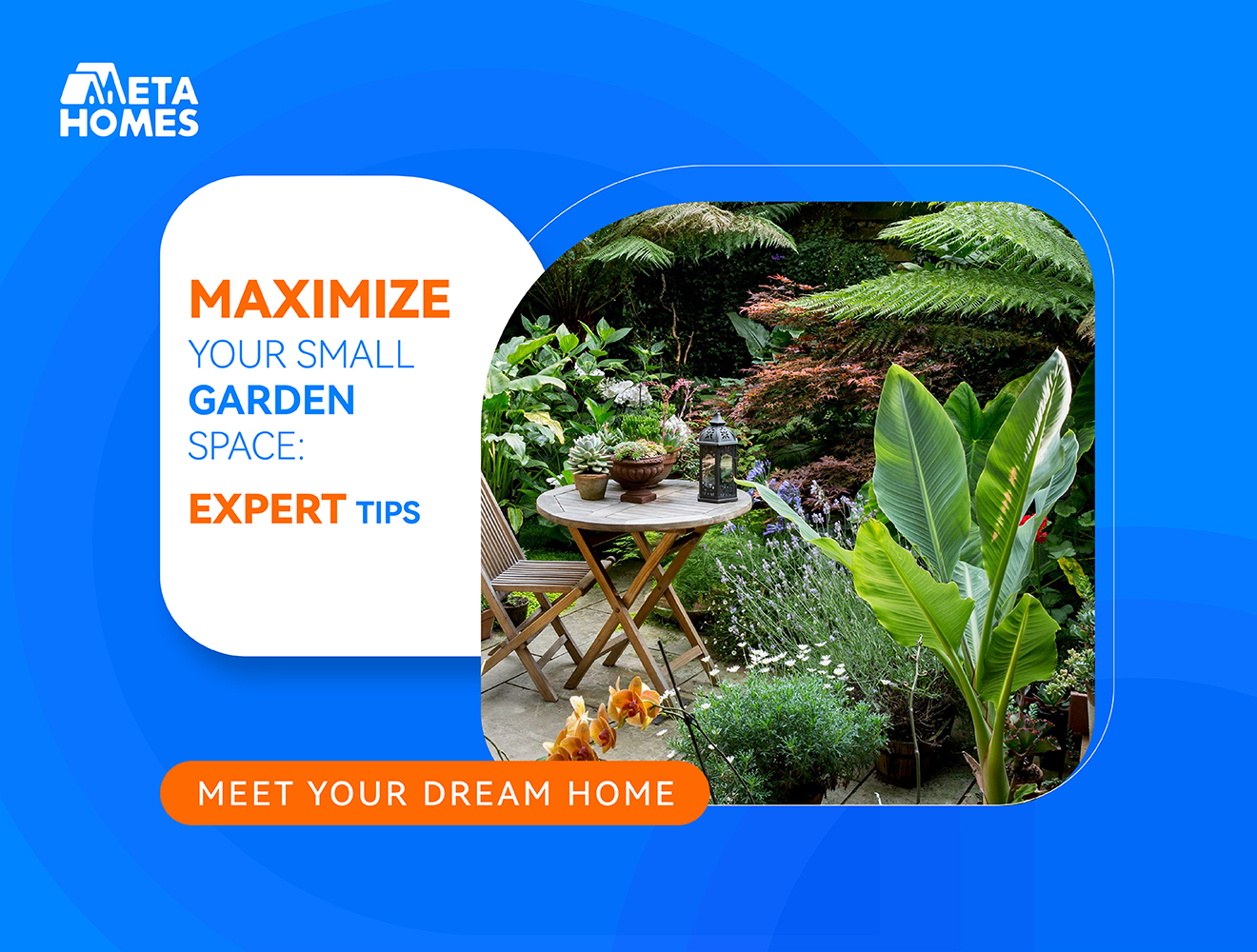
Most of the time, when we talk about gardens, we all, well, maybe the majority of us picture a small farmland away from home or a dirty place away from our houses.
I used to think that way too until I got to know that small gardens can also be found in urban settings, balconies, or compact backyard spaces. They offer a breath of fresh air and a touch of nature to the environment.
Despite the limited size of your small garden, it can still be designed and managed to create a rich, functional, and visually appealing masterpiece that provides the same or almost the same appeal as larger gardens.
To get to this stage, you need a dose of smart planning, innovative design, and efficient use of available space.
A small garden is often seen as a limitation, but it’s actually an opportunity to showcase creativity and ingenuity. With a little planning and clever design, even the tiniest outdoor space can be transformed into a marvel that gets everyone wondering.
Understanding Your Garden Space
Before the design and plant selection, it’s crucial to understand your garden’s dimensions, sunlight exposure, and soil quality.
Measure the area accurately by measuring tape and observe the patterns of sunlight and shade throughout the day. It might take a while for you to figure this out, but it’s a very important factor as your garden needs sunlight to do well.
This understanding will guide you in choosing the right plants and design elements that will thrive in your garden.
Planning Your Small Garden
To get the most out of your small garden, you get to have a clear vision of exactly what you want. Here are a few ways to help you out
-
Assess Your Space: Measure the dimensions of your garden to understand its exact size. Identify any unique features, such as existing trees, fences, or structures, that can be incorporated into your design.
-
Determine Your Needs: Decide what you really want to do with your garden. Do you want a space for relaxation, a place to grow vegetables, or a decorative area filled with flowers? Knowing your primary goals will help you plan effectively.
-
Create a Layout: Sketch a layout of your garden on paper. Allocate specific areas for different purposes, such as seating, planting, and pathways. This visual representation will guide you as you start transforming your space.
Garden Ideas That Often Work Best for Small Gardens
A few garden ideas that work best for small spaces:
-
Vertical Gardening
When floor space is limited, think vertically. One of the most effective ways to maximize space in a small garden is to practice vertical gardening techniques.
This simply means growing plants upwards instead of outwards. With this approach, every vertically standing thing is a cool place for you to utilize.
You can make use of the fences and even the exterior walls of your house. This leaves more ground area available for other uses.
Here are some ideas to get you started with a vertical garden:
-
Wall-Mounted Planters: Install planters or shelves on walls or fences and yes, even trees. This works best for growing herbs, flowers, or small vegetables. Wall-mounted planters are not only space-efficient but also add an aesthetic appeal to your garden.
-
Trellises and Arbors: This is often used to support climbing plants such as beans, peas, or flowering vines. You can also consider using these if you have a small garden. It works best for large gardens as well.
-
Hanging Baskets: Hanging baskets are perfect for trailing plants like strawberries, petunias, or ivy. They can be hung from hooks, pergolas, or even tree branches, effectively utilizing overhead space.
-
Container Gardening
Containers are a versatile and practical solution for small gardens. Containers allow you to grow a variety of plants in confined spaces and can easily be moved around to catch the sun or shade. This type is perfect for renters who might need to relocate their gardens.
Here are a few tips for container gardening that you can use in your small garden:
-
Variety of Containers: Use a mix of containers of different sizes, shapes, colors, and materials. This adds visual interest and allows you to grow a diverse range of plants, from small herbs to larger shrubs.
-
Portable Planters: Choose containers with wheels or lightweight materials so they can be moved around easily. This is especially useful for chasing the sun or redesigning your garden layout if you are tired of the current layout.
-
Self-Watering Planters: Self-watering containers are a great option for busy gardeners, especially if you are the type who often takes weekend vacations. You wouldn’t want to come back and meet your plants dead right? Sure. That’s the benefit of self-watering planters. They ensure your plants receive consistent moisture, reducing the need for frequent watering and maintaining healthy growth.
The general rule for container gardening is that you make sure that all containers have adequate drainage to prevent waterlogging and root rot.
-
Layered Planting
Layering plants by height and texture often makes a small garden appear more spacious and visually appealing. This requires you to plant taller plants at the back, medium-sized plants in the middle, and shorter plants at the front (in that order).
Here’s an effective way of maximizing your small garden through layering:
-
Ground Cover Plants: Use low-growing plants such as thyme, moss, or creeping Jenny to cover the ground. These plants spread horizontally, filling in gaps and providing a green carpet, further adding a touch of aesthetics to your garden.
-
Mid-Height Plants: Plant medium-height shrubs, perennials, or vegetables in the middle layer. This includes plants like lavender, rosemary, or dwarf tomatoes that add texture and color.
-
Tall Plants: On the back or along the edges, you can plant taller species such as ornamental grasses, bamboo, or small trees. These plants create a backdrop and add height to your garden.
If layering is well followed as mentioned above, then your garden will take the shape of steps
Smart Plant Selection for Your Small Garden
Choosing the right plants for your small garden is crucial for maximizing space and ensuring a rich, and attractive environment.
-
Opt for compact or dwarf plant varieties that take up less space. Many fruit trees, vegetables, and ornamental plants come in smaller versions suitable for small gardens.
-
Plant perennials that return year after year, reducing the need and cost for replanting and maintenance. Examples include hostas, daylilies, and sedums.
-
Plants like Succulents and Cacti are perfect for small gardens as they require minimal space and care. They can be planted in small containers or integrated into rock gardens.
Maintenance Tips for Small Gardens
Maintaining a small garden requires careful attention to ensure it remains healthy.
-
Regular Pruning: Keep the plants well-trimmed to prevent them from overcrowding and ensure they receive adequate light and air circulation.
-
Soil Health: Use high-quality soil and regularly amend it with compost or organic matter to maintain fertility and structure.
-
Watering: Water plants consistently and check soil moisture regularly. Overwatering or underwatering can stress plants and impact their growth.
-
Pest Control: Monitor for pests and diseases, and take action promptly. Use natural or organic methods to manage pests and avoid harsh chemicals that can harm beneficial insects and soil health.
Remember to choose the right plants, create distinct zones, and maintain your garden with care to ensure it thrives.



Leave a Reply